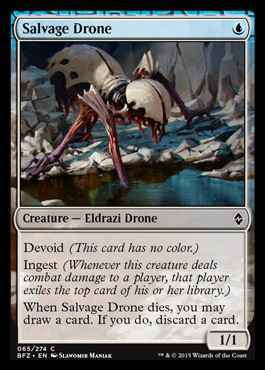

What Else Does It Hit? In Standard, Alpine Moon has a handful of targets, but I'm not sure any are powerful enough to justify dedicating a sideboard slot to a do-nothing hate card, especially when Field of Ruin is still in the format. Of course, this plan isn't without downsides: because of Blood Moon, Tron is prepared to deal with artifacts and enchantments out of the sideboard with Nature's Claim, so if you are using Alpine Moon as Tron hate, make sure you also have a fast clock to try to kill your opponent before they draw an answer to Alpine Moon, cast their huge threats, and win the game in short order. Alpine Moon comes down on Turn 1 and shuts off Tron (by removing the "Tron" type) for as long as it is on the battlefield. The big-mana deck has been near the top of the Modern format for a long time now thanks to its ability to make seven mana with just three Tron lands.

Primary Target? It seems likely that Alpine Moon was designed with Tron in mind. While giving your opponent a City of Brass might sound like a bad idea, it's actually a great trade when you consider that the alternative is being beaten to death by a Celestial Colonnade or your opponent casting a Karn Liberated on Turn 3 with the help of Tron. You simply choose the most problematic land your opponent controls, and Alpine Moon turns it into a painless City of Brass.

What Is It? Perhaps the easiest way to think of Alpine Moon is as an Pithing Needle for nonbasic lands. With this in mind, we're going to take a few minutes today to break down the new hate cards and hosers from Core Set 2019 discuss what cards or decks they are targeted to fight in Standard, Modern, and maybe even Legacy and try to come away with a better understanding of these cards' power and playability across formats. In evaluating new planeswalkers and creatures, you're often thinking, "how good will this card be in my deck?" With hate cards, you're trying to figure out how good they will be against your opponents' decks or the metagame at large. It seems like Wizards may have made this connection as well because not only are core sets back with Core Set 2019, but Core Set 2019 is also overflowing with powerful but narrow hosers and hate cards!īy their very nature-being 10/10 against a very specific subset of cards but often 1/10 against everything else-hosers and hate cards are difficult to evaluate. In the past, the problem was solved by core sets, which tend to have much looser themes (and more reprints) than other Standard-legal sets, which allows Wizards to simply dump in random cards that were important for Standard but perhaps not totally on flavor for Kaladesh, Ixalan, or whatever other planes we happen to be visiting for the rest of the year. In this Modern age of Magic set design, staying true to the flavor and story is very important to Wizards, which means if a card doesn't happen to be on theme for a set, it doesn't make it into the set, even if the card is potentially important for making Standard function as intended.
#MTG CARD IMAGE GALLERY M19 PATCH#
If you track back through the rough patch of Standard over the past two or three years and the lack of hate cards, the path will lead you to one place: the end of core sets. In fact, the problem got so bad that at one point, we had a Standard format where there wasn't a single card available to interact with the graveyard (and this format was unsurprisingly dominated by Emrakul, the Promised End and other graveyard-based decks).

much has been made about how narrow, targeted answer cards have been missing from new sets.


 0 kommentar(er)
0 kommentar(er)
